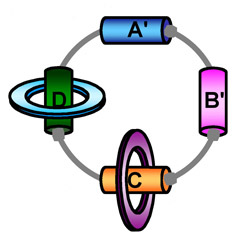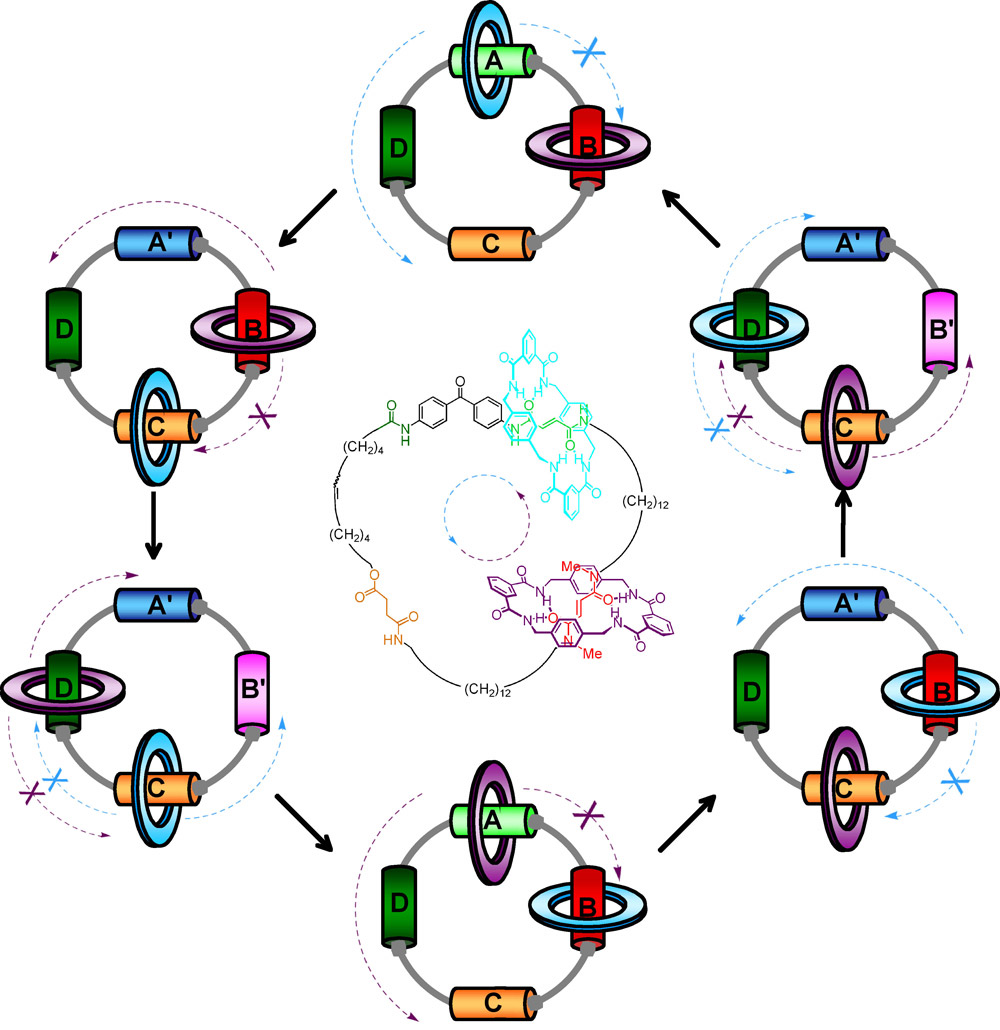Hidden Twists and Turns
Many protein molecules, such as those that process DNA, execute twisting motions, but researchers have only managed to measure the torques in a few cases. Often the random thermal jiggling of water molecules makes rotation hard to detect. A new analysis technique reported in the 24 November Physical Review Letters cuts through this noisy mess to reveal a hidden torque. Compared to other measurements, this method achieves ten times higher torque sensitivity. It could be applied to proteins, DNA, or even synthetic nanomotors developed for futuristic devices.
In the past 20 years researchers have measured molecular-scale forces using lasers as “optical tweezers” with increasing sophistication. In one type of experiment, the laser traps a tiny bead attached to the end of a targeted molecule, such as a protein. By tracking the bead’s position within the small trap region, researchers can measure the force supplied by RNA polymerase as it shuttles along a strand of DNA or by a viral protein as it packs an entire genome into a viral envelope. Random jiggling of microscale objects, called Brownian motion, tends to dominate the bead motion for the smallest forces, so researchers analyze their data statistically to distill out the non-random motion.
Studies involving torques–twisting forces–have not advanced as far as those probing linear forces. Measurements of the torques wielded by over-twisted DNA and the propeller-like flagella of bacteria were successful because they were strong enough to largely overcome the Brownian fluctuations. But weaker torques–perhaps those of the enzyme that coils up long DNA strands during gene replication and transcription–might not show any clear rotational motion in the video analysis.
To address this limitation, Giovanni Volpe and Dmitri Petrov of the Institute of Photonic Sciences in Barcelona, Spain, devised a method for measuring torque using statistical methods similar to what researchers use for linear force measurements. “We were really surprised after searching the contents of journals and the Internet that Brownian motion in the presence of an external torque had not been described before,” recalls Petrov. They used the so-called correlation function for the trapped particle’s coordinates, which can determine whether there are any trends in the particle’s motion. For instance, there may be a correlation between the particle being in the top half of the trap at one moment and being in the right half a few seconds later. This would show up as a peak in the cross-correlation function and would indicate a clockwise torque acting on the trapped particle.
To test their method, Volpe and Petrov trapped a 1-micron-wide polystyrene bead with a red laser beam and at the same time nudged it with a green laser. The green beam’s screw-shaped wavefront gently pushed the bead around the central axis of the trap but not enough to create a visible orbit in the Brownian-dominated video. Only when the researchers calculated the correlation functions were they able to measure a miniscule torque of 4x10-21 newton-meters, which matched their predictions and was ten times smaller than the smallest torque measured before.
Philip Nelson of the University of Pennsylvania in Philadelphia thinks this is exciting work because current torque measuring techniques are not sensitive enough. “The eyeball test is not going to cut it anymore,” he says. “We now have to see through the eyes of statistics.” David Leigh of the University of Edinburgh has developed a molecule-sized motor whose light-induced rotation could power future nanomachines. He says more precise torque measurements like those of Petrov and Volpe are “crucial for improving our understanding of how biomolecular machines work and for assessing how well the current early generations of synthetic molecular machines work.”
–Michael Schirber
Michael Schirber is a Corresponding Editor for Physics Magazine based in Lyon, France.





